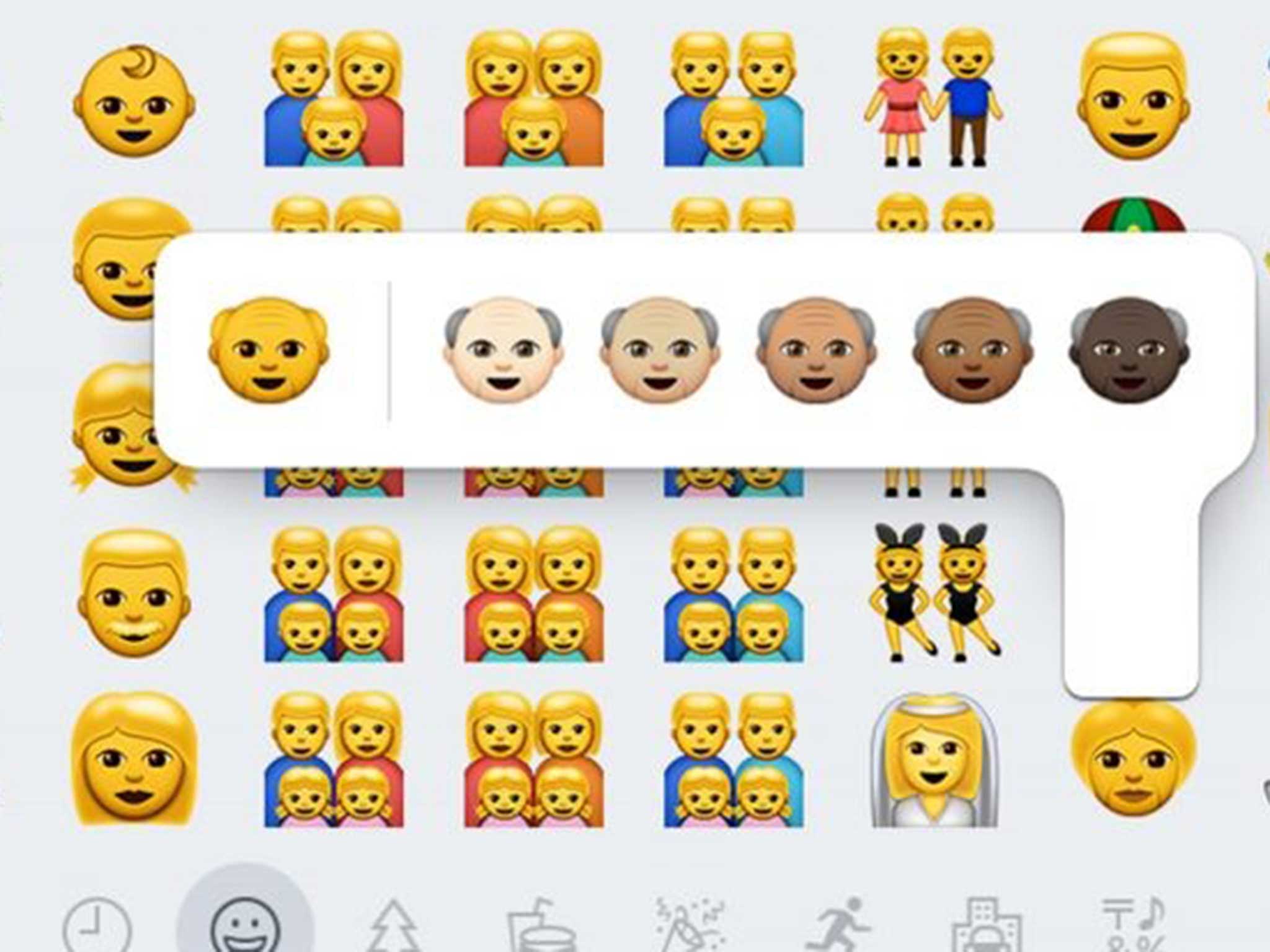Apple's ethnic emojis are being used to make racist comments on social media
They were intended to promote harmony, but have achieved the opposite

Your support helps us to tell the story
From reproductive rights to climate change to Big Tech, The Independent is on the ground when the story is developing. Whether it's investigating the financials of Elon Musk's pro-Trump PAC or producing our latest documentary, 'The A Word', which shines a light on the American women fighting for reproductive rights, we know how important it is to parse out the facts from the messaging.
At such a critical moment in US history, we need reporters on the ground. Your donation allows us to keep sending journalists to speak to both sides of the story.
The Independent is trusted by Americans across the entire political spectrum. And unlike many other quality news outlets, we choose not to lock Americans out of our reporting and analysis with paywalls. We believe quality journalism should be available to everyone, paid for by those who can afford it.
Your support makes all the difference.Apple introduced its new racially diverse emoji last week, allowing users to cycle through various shades of white and brown to customise their emoji's skin colors. Some rejoiced, with choruses of "We made it" flanked by newly black praise-hand emoji filling Instagram and Twitter. Some even professed to cry tears of joy over this sign of racial inclusion.
But already, Apple's well-intentioned gesture to human diversity has taken a turn for the worse. The emoji are being used to make racist comments on social media and insert questions of race in texts and tweets where they may never have arisen before. Instead of correcting its mistake – excluding people of colour from emoji – Apple has, in some ways, made the situation worse.
Because I'm black, should I now feel compelled to use the "appropriate" brown-skinned nail-painting emoji? Why would I use the white one? Now, in simple text messages and tweets, I have to identify myself racially. I'll now question other people's emoji use when they're speaking to me: why is he sending me the black angel emoji specifically? Why is she sending me the black-girl emoji instead of the white one? What Apple has done is introduce race into everyday conversations where it doesn't necessarily need to be. Already, the cleaning brand Clorox has felt the weight of that reality, when in response to the new emoji, the brand tweeted "where's the bleach?". The barrage of criticism that followed the face-palm moment pressured the company to tweet an apology, noting that it never meant the comment as a reference to race, just that it thought some emoji – such as red wine and showers – could "use a cleanup".
Apple's intent was good. But the execution was completely flawed. Apple took the easy way out. Instead of creating actual emoji of colour, Apple simply allows its users to make white emoji a different colour. With this update, the company skirts around having to attribute certain physical characteristics to certain races of people. For example, there's nothing specifically "black" about an emoji with browner skin. Deepening the skin colour of a previously white emoji doesn't make the emoji not white. It's just a bastardised emoji blackface. The blond-haired emoji man and the blue-eyed emoji princess are clearly white, but you can slip them into a darker-colored skin. These new figures aren't emoji of colour; they're just white emoji wearing masks.
Apple's mistake was in ever introducing the concept of race to emoji in the first place. Now, if I use two smiley faces to represent me and a white friend, I have to contemplate what colour emoji to use. With some of these emoji, it seems as if Apple included a diverse skin tone option for the sake of it, like with the racing horse; the jockey's face is nearly too small to even see what race he is. The company should've never made race a question, making the emojis raceless with yellow faces and leaving it at that. This, instead, seems like a big horse and pony parade by Apple to appease people of colour. Sure, it'd be nice to see some emoji that look like me. But, at the end of the day, none of these really do.
© Washington Post
Join our commenting forum
Join thought-provoking conversations, follow other Independent readers and see their replies
Comments